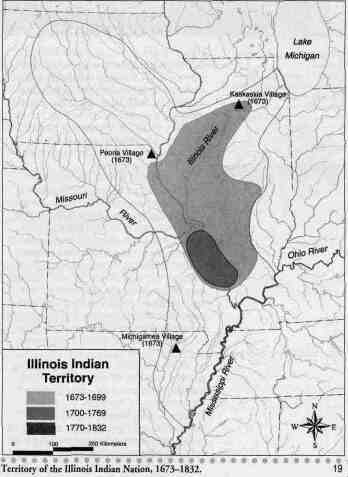As Illinois’ yearlong bicentennial celebrations commence this weekend, starting with this installment of “From the History Room” and continuing through the coming year we will direct a spotlight upon the history of our state, with a special focus on connections between Illinois’ early history and the history of Tazewell County and Pekin.

The best place to begin the story of our state is at the beginning – not Dec. 3, 1818, when Illinois became a state, but in the 1600s, with the arrival of French explorers. The kingdom of France had laid claim to large parts of Canada and the lands through which the Mississippi River and its tributaries flowed, and in the latter decades of the 17th century the French began to explore Illinois – a country of wild and unbroken forests and prairies, before roads, dams, levees, cities, and powerlines.
But, as we recalled last week, it was not an uninhabited land.
Our state’s name, “Illinois,” is a French word. It comes from the name of the people living here when the French first began to explore this part of the world. The people were called the Illiniwek or Illini, also called the Inoka, who were a confederation of 12 or 13 Native American tribes who lived in an area of the Upper Mississippi River valley reaching from Iowa to Lake Michigan and as far south as Arkansas.
When the French first encountered the Native Americans here, the Illiniwek confederation’s member tribes included the Kaskaskia, Cahokia, Peoria, Tamaroa, Michigamea, Moingwena, Coiracoentanon, Chinkoa, Espeminkia, Chepoussa, Maroa, and Tapourara. The names of the first three listed tribes are probably better remembered than the others. It is from the Kaskaskia tribe in southern Illinois that Illinois’ first capital, Kaskaskia in Randolph County, got its name. The name of the Cahokia tribe is remembered today because of the famous Cahokia Mounds in St. Clair County, which are the remains of a Native American city that existed from about A.D. 600 to 1400. The people of Cahokia Mounds were no doubt ancestors of or related to the Illiniwek tribes. The city and county of Peoria were named for the Peoria tribe, which lived along the west shores of the Illinois River at Lake Pimiteoui (Peoria Lake).

When French explorers and fur traders encountered the Illiniwek in the 1600s, they decided to call their land by the French term Pays de Illinois (land of the Illinois, or the Illinois Country). The French also sometimes referred to the Illinois Country as la Haute-Louisiane (Upper Louisiana).
The names of the first French explorers of the Illinois Country are well known: Marquette and Jolliet, La Salle and Tonti. In 1673 and 1674, Father Jacques Marquette, a Catholic Jesuit priest, and Louis Jolliet explored the Illinois River and Mississippi River down to the Arkansas River. The city of Marquette Heights in Tazewell County and the Hotel Pere Marquette in Peoria are named after Father Marquette (Pere in French means “Father”).
Some years later, on Jan. 15, 1680, two French explorers name René-Robert Cavelier, who had the French aristocratic title of Sieur de La Salle, and his companion Henri de Tonti established a small, short-lived outpost named Fort de Crèvecoeur or Fort Crèvecouer near the southeast shore of Peoria Lake in Pekin Township, in or near modern Creve Coeur or East Peoria.
The arrival of the Europeans caused catastrophic disruptions in the way of life of the Native Americans. The Europeans unwittingly brought diseases that wiped out many Indian tribes, including most of the Illiniwek tribes. Off to the east, European newcomers pushed native tribes west in search of new hunting grounds, leading to war between tribes in competition for the same lands. But by the mid-1700s, European diseases and war with the expanding Iroquois League had reduced the Illiniwek to only five tribes: the Cahokia, Kaskaskia, Michigamea, Peoria, and Tamaroa.
Next week we’ll recall the confusingly named French and Indian War.











